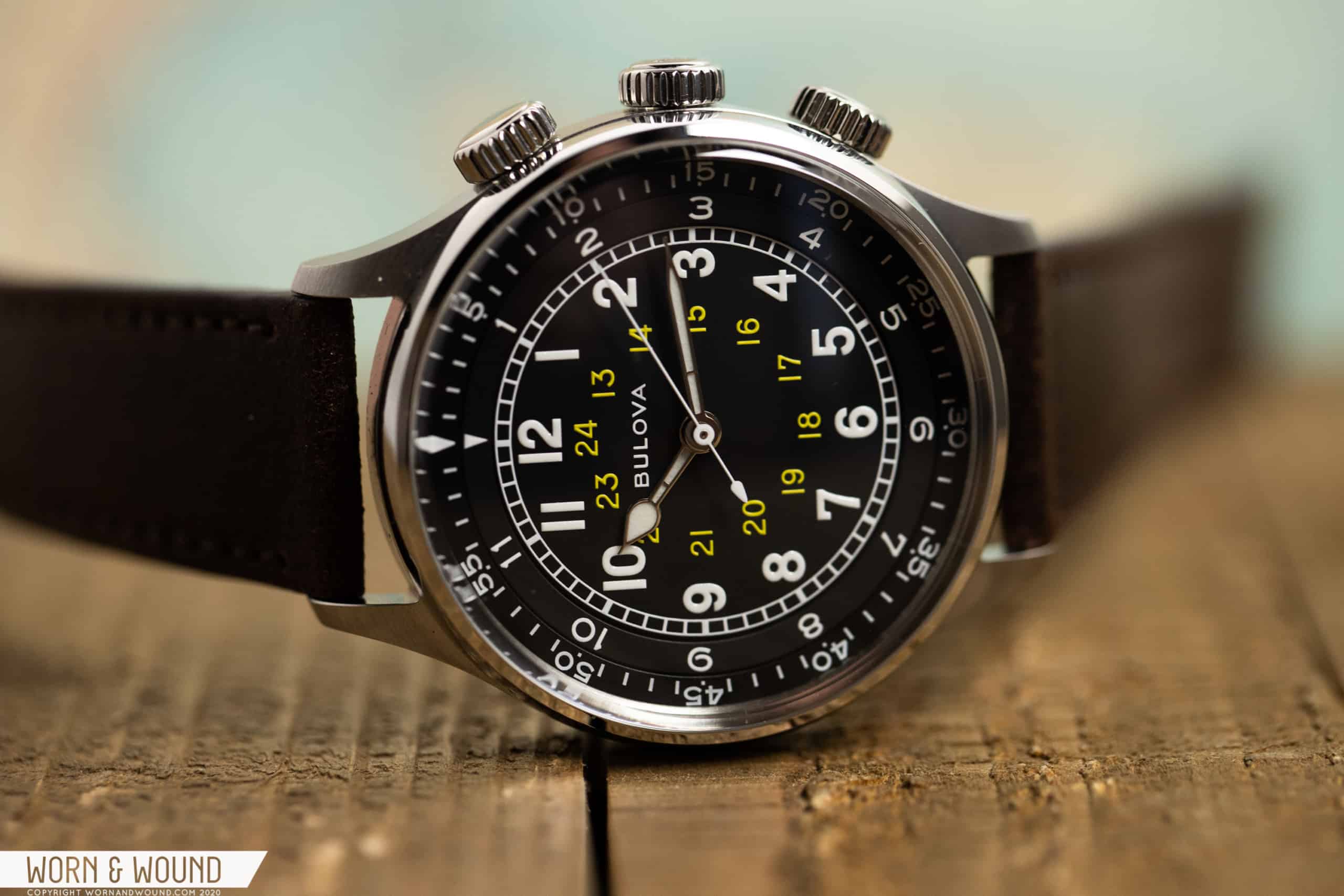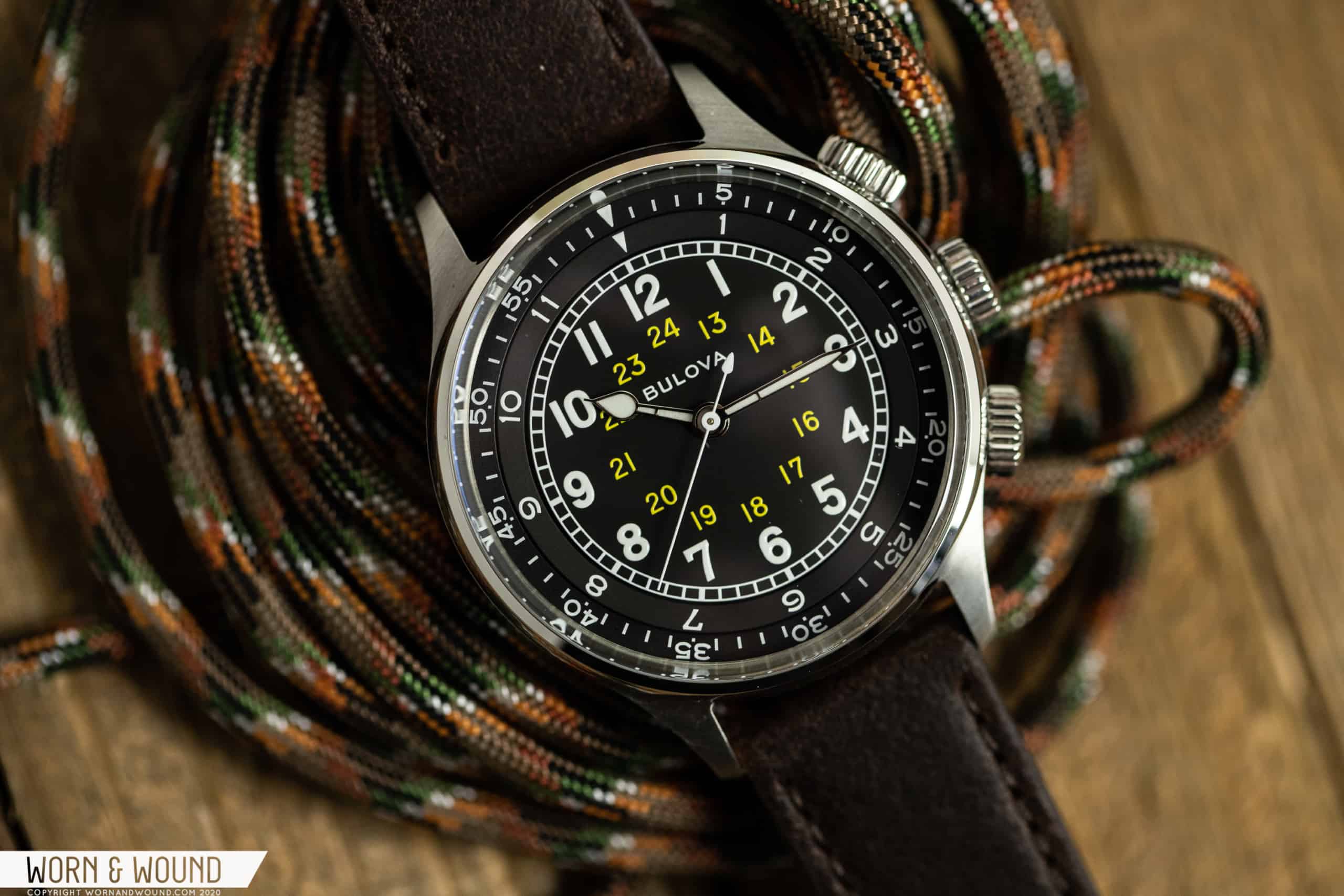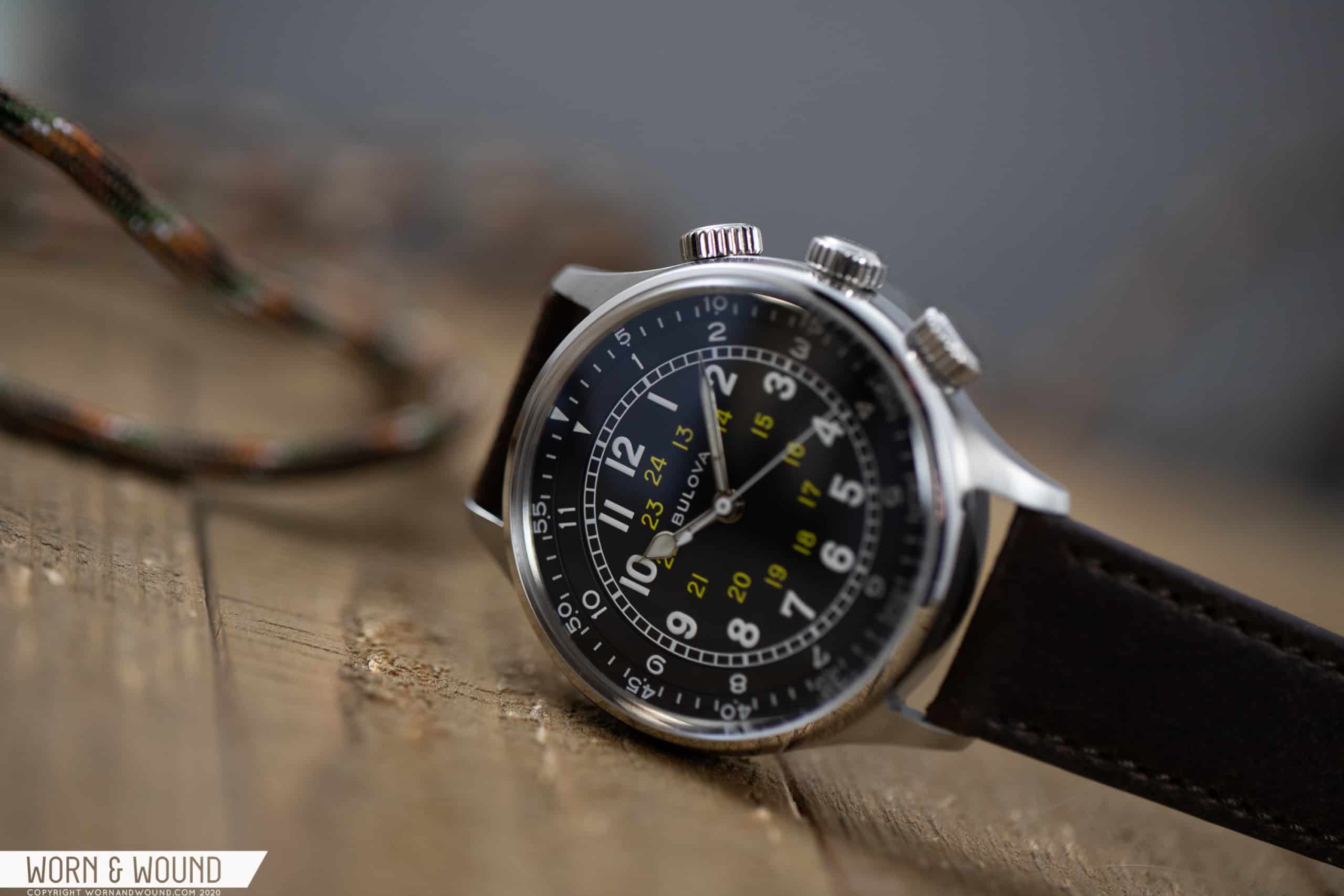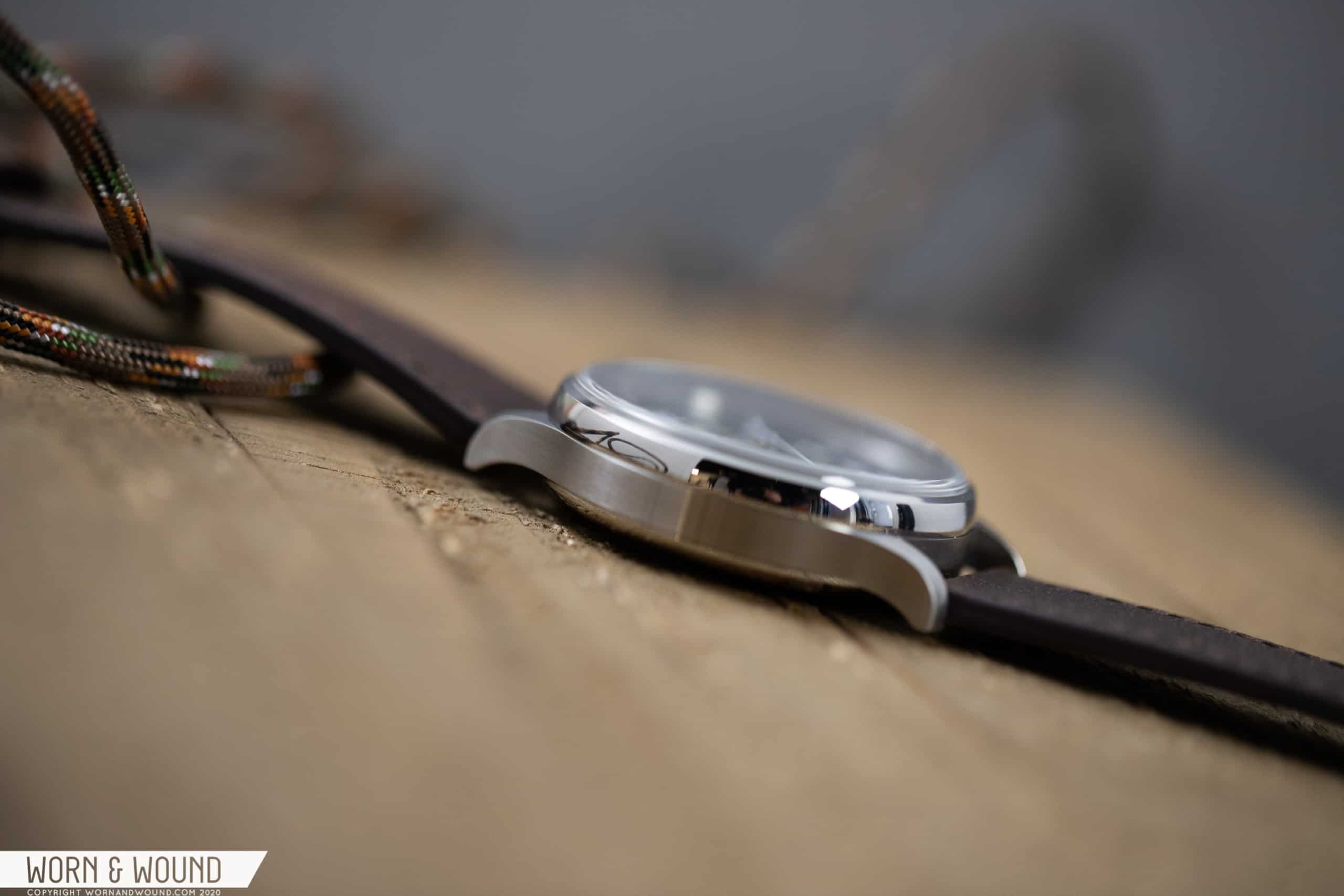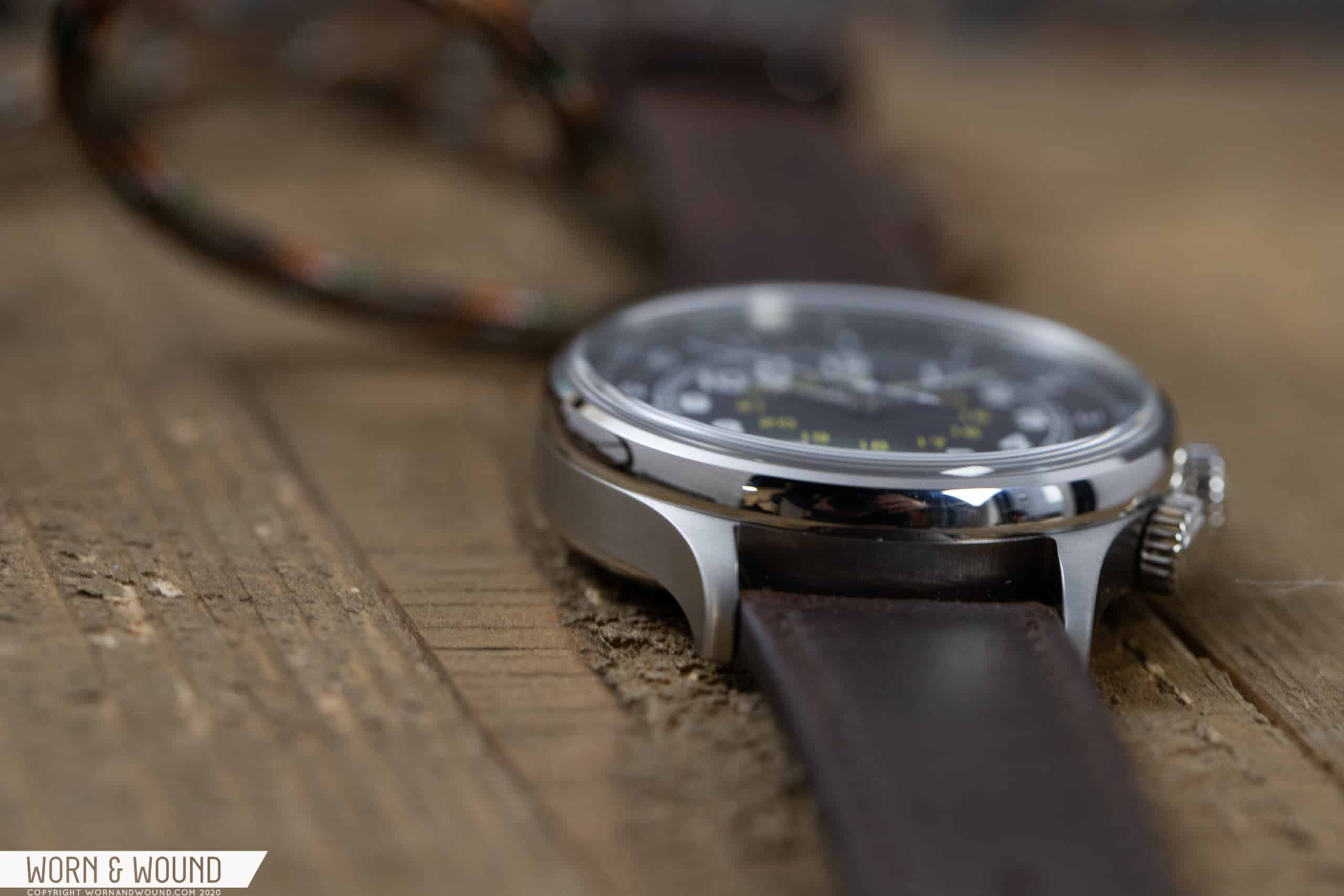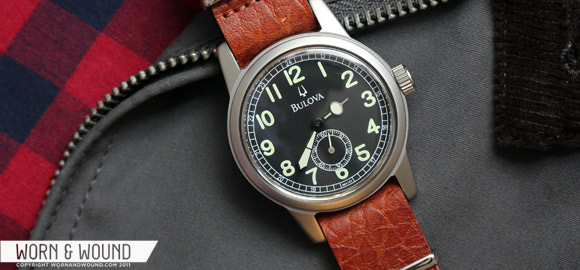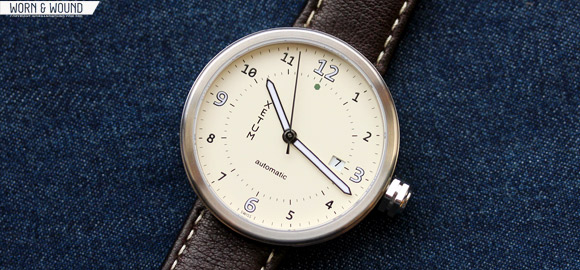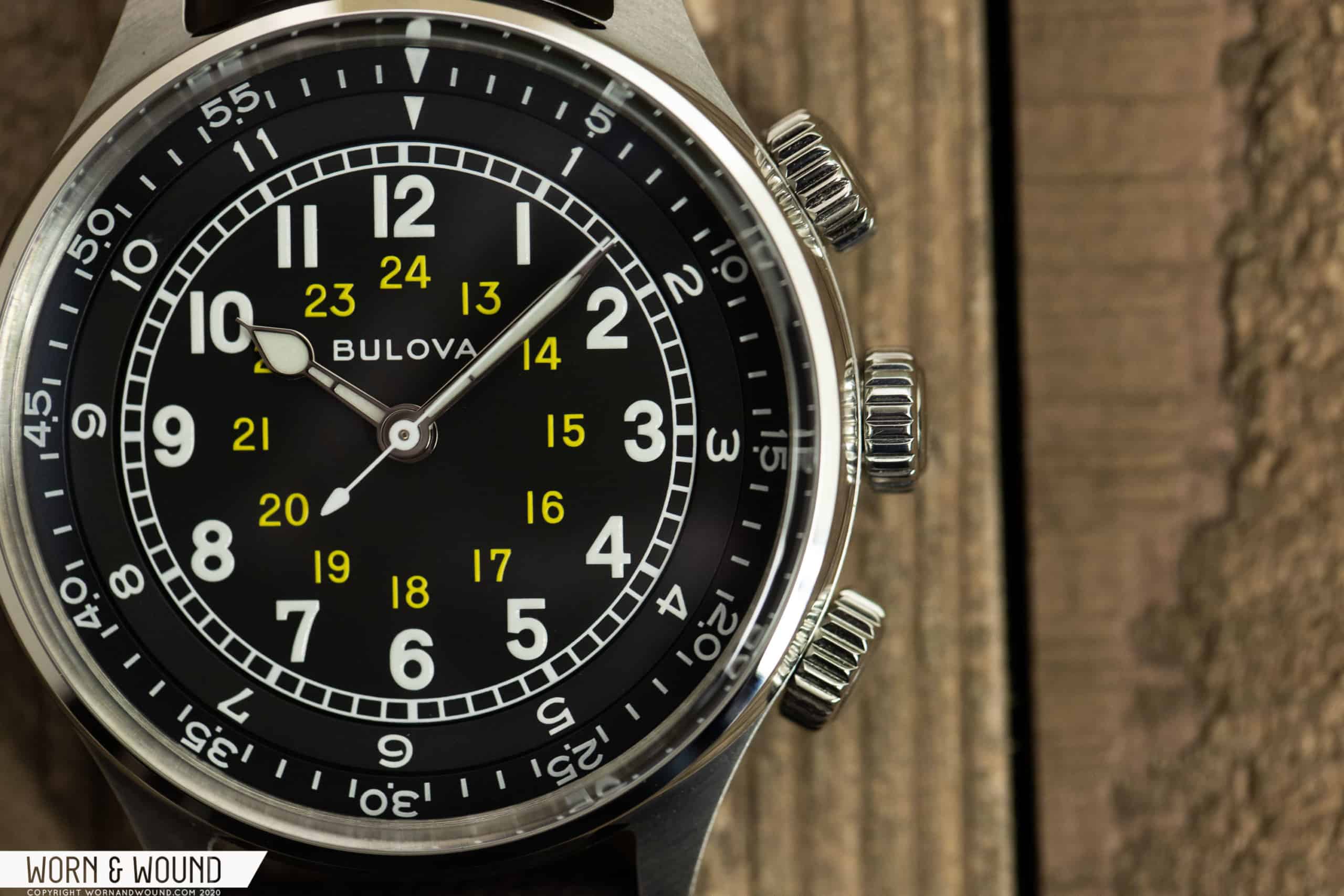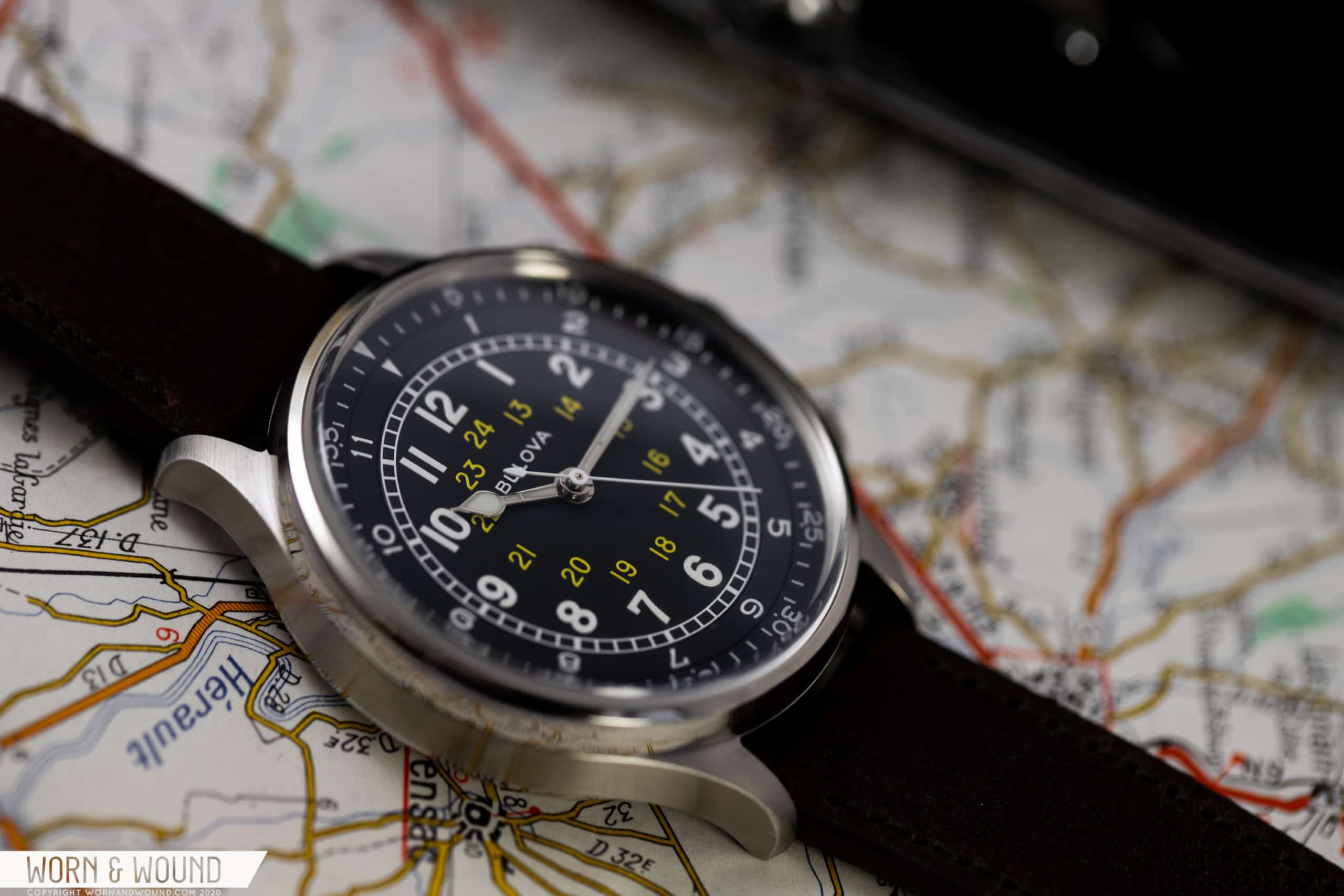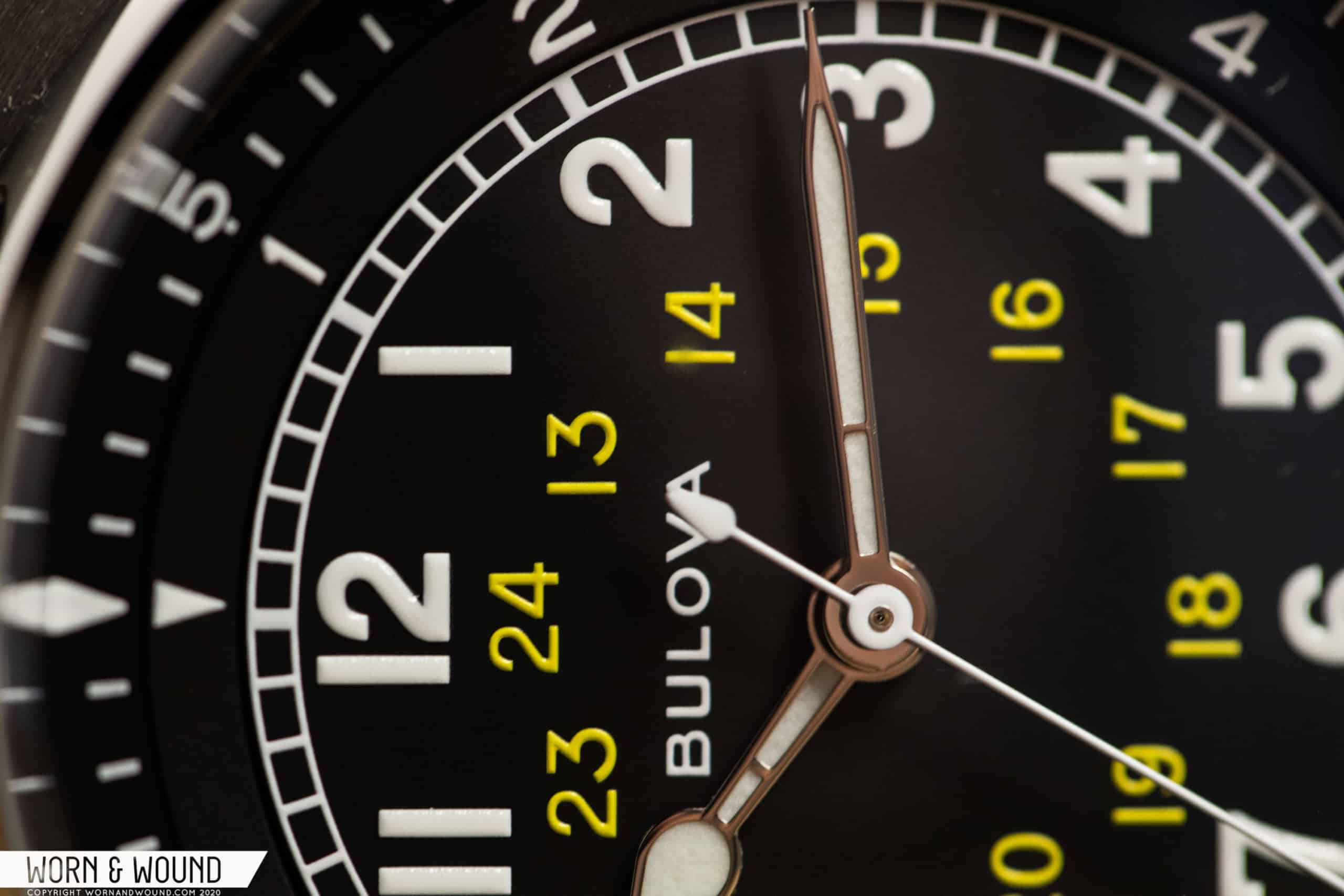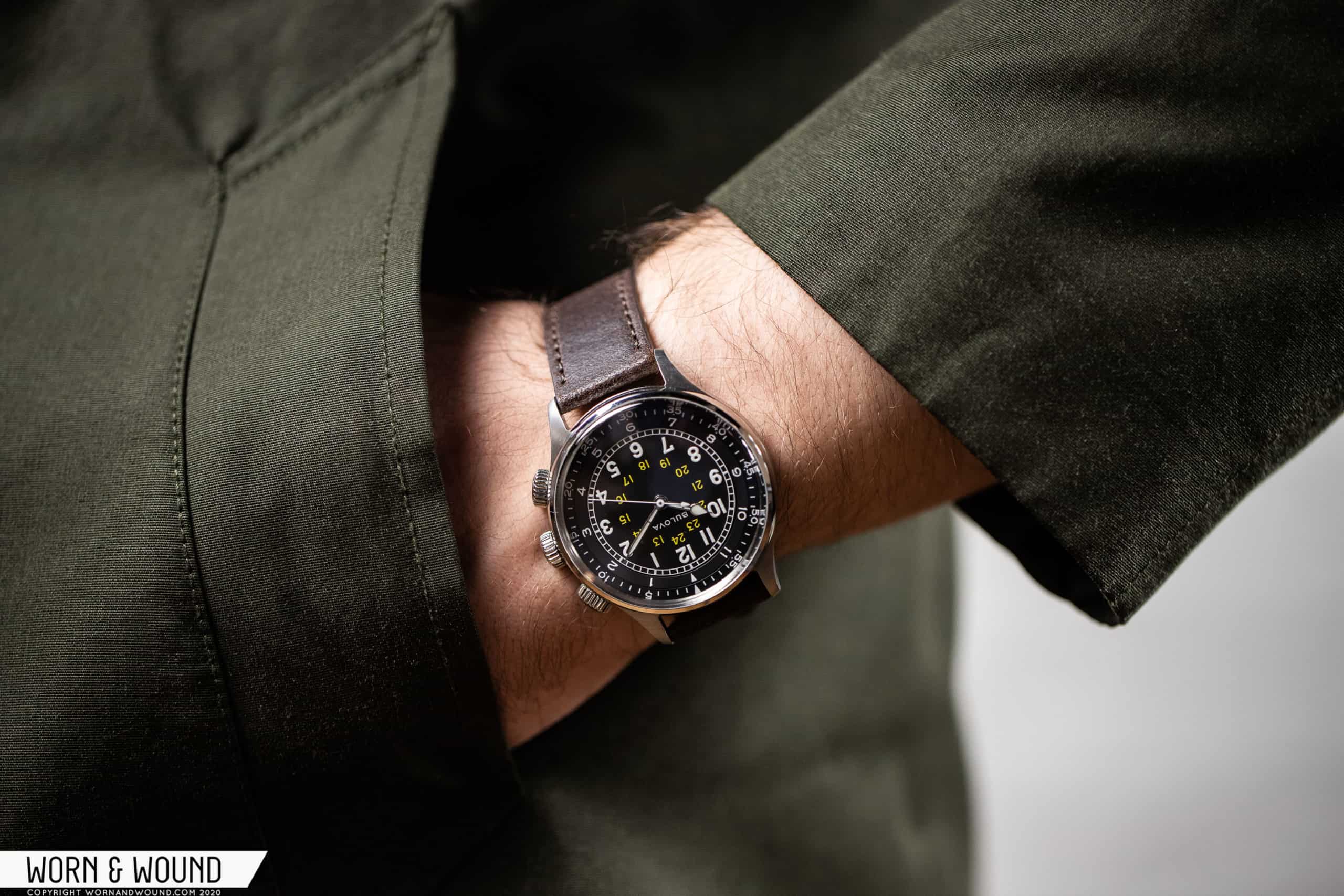Watches, in their variety, grasp appeal from nearly endless sources. Just think of all the things you might take pleasure in as a watch lover for any particular watch. A watch can be a unique and beautiful dial, an artifact from another time that can temporarily bring you places you’ve never been, a tool that makes your life safer, or simply an accessory that finishes off an outfit. Maybe it’s all of these things.
A watch is also a tactile and physical pleasure. Stopping, starting and resetting a chronograph. Watching the seconds hand fly around the dial in impossible to see tiny increments, with power generated not from electricity, like everything else in our lives, but through the motion of our own bodies as we wear the watch. This, in a lot of ways, is the pleasure that the Bulova A-15 taps into. The dual crowns, while ostensibly offering some added utility to time events and track another timezone, are at their core just good old fashioned fun to manipulate. If you’re constantly playing with your dive bezel in meetings, on the train, and in other places where it just doesn’t make sense, you’re going to like the A-15.
But you’re also probably going to like it if you’re just a fan of military inspired pilot’s watches, which have their own charms with or without the somewhat gimmicky dial layout of the A-15. Even if you never make use of this watch’s defining feature, it more than holds up as a fun, heritage aviation piece, and coming in well under $1,000, it offers quite a bit of value as well. Let’s get into it.









 Featured Videos
Featured Videos




